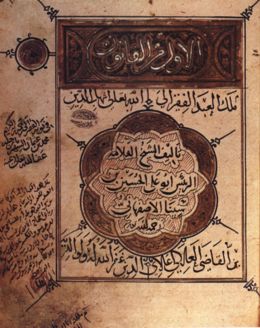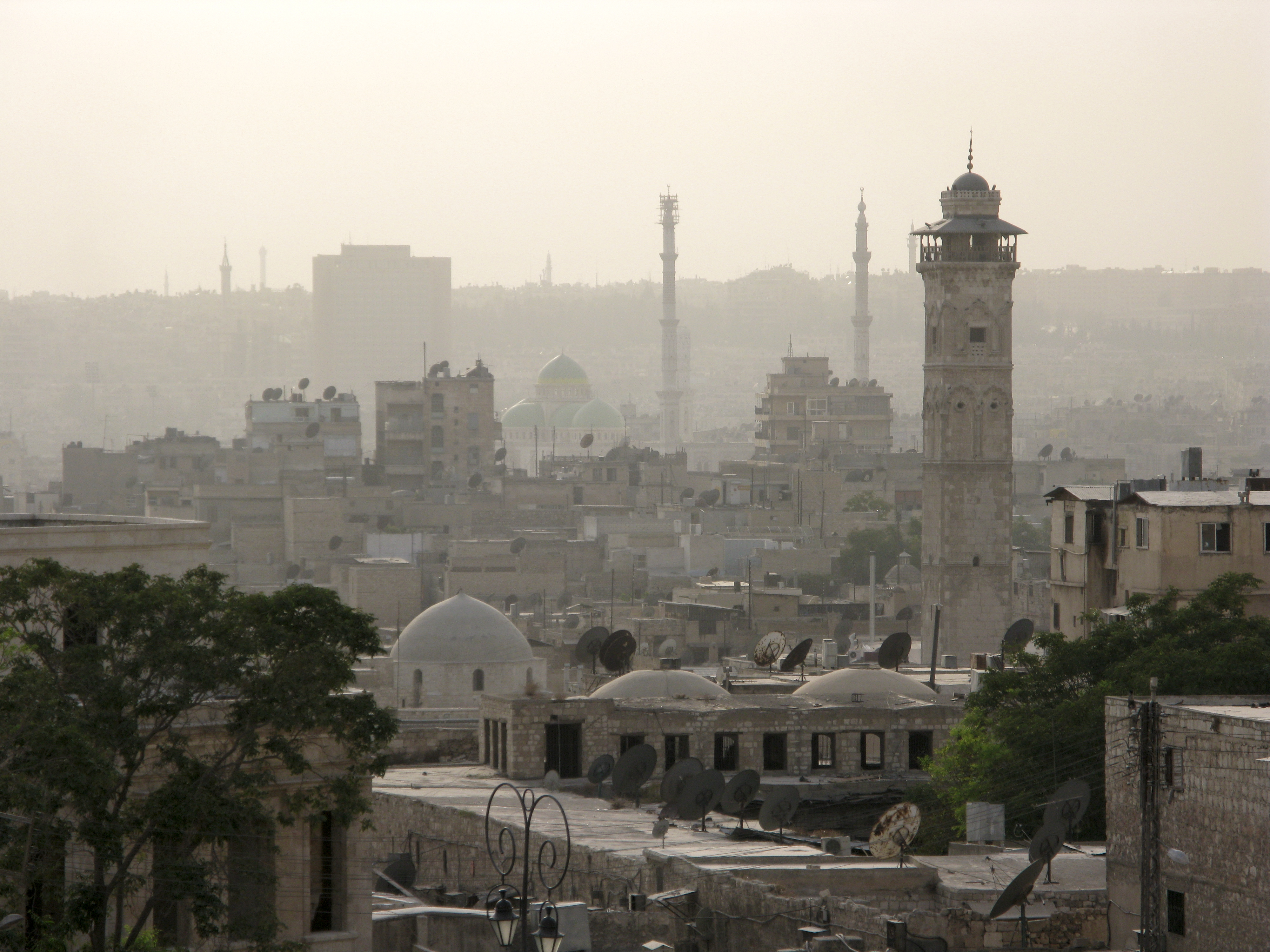|
Ibn Al-Nadim
Abū al-Faraj Muḥammad ibn Isḥāq al-Nadīm ( ar, ابو الفرج محمد بن إسحاق النديم), also ibn Abī Ya'qūb Isḥāq ibn Muḥammad ibn Isḥāq al-Warrāq, and commonly known by the '' nasab'' (patronymic) Ibn al-Nadīm ( ar, ابن النديم; died 17 September 995 or 998) was an Arab Muslim bibliographer and biographer of Baghdad who compiled the encyclopedia ''Kitāb al-Fihrist'' (''The Book Catalogue''). Biography Much known of al-Nadim is deduced from his epithets. 'Al-Nadim' (), 'the Court Companion' and 'al-Warrāq () 'the copyist of manuscripts'. Probably born in Baghdad ca. 320/932 he died there on Wednesday, 20th of Shaʿban A.H. 385. He was a Persian or perhaps an Arab. From age six, he may have attended a ''madrasa'' and received comprehensive education in Islamic studies, history, geography, comparative religion, the sciences, grammar, rhetoric and Qurʾanic commentary. Ibrahim al-Abyari, author of ''Turāth al-Insaniyah'' says al-Nad ... [...More Info...] [...Related Items...] OR: [Wikipedia] [Google] [Baidu] |
Medieval Philosophy
Medieval philosophy is the philosophy that existed through the Middle Ages, the period roughly extending from the fall of the Western Roman Empire in the 5th century until after the Renaissance in the 13th and 14th centuries. Medieval philosophy, understood as a project of independent philosophical inquiry, began in Baghdad, in the middle of the 8th century, and in France, in the itinerant court of Charlemagne, in the last quarter of the 8th century. It is defined partly by the process of rediscovering the ancient culture developed in Greece and Rome during the Classical period, and partly by the need to address theological problems and to integrate sacred doctrine with secular learning. The history of medieval philosophy is traditionally divided into two main periods: the period in the Latin West following the Early Middle Ages until the 12th century, when the works of Aristotle and Plato were rediscovered, translated, and studied upon, and the "golden age" of the 12th, 1 ... [...More Info...] [...Related Items...] OR: [Wikipedia] [Google] [Baidu] |
Madrasa
Madrasa (, also , ; Arabic: مدرسة , pl. , ) is the Arabic word for any type of educational institution, secular or religious (of any religion), whether for elementary instruction or higher learning. The word is variously transliterated '' Madrasah arifah'', ''medresa'', ''madrassa'', ''madraza'', ''medrese'', etc. In countries outside the Arab world, the word usually refers to a specific type of religious school or college for the study of the religion of Islam, though this may not be the only subject studied. In an architectural and historical context, the term generally refers to a particular kind of institution in the historic Muslim world which primarily taught Islamic law and jurisprudence (''fiqh''), as well as other subjects on occasion. The origin of this type of institution is widely credited to Nizam al-Mulk, a vizier under the Seljuks in the 11th century, who was responsible for building the first network of official madrasas in Iran, Mesopotamia, and Khor ... [...More Info...] [...Related Items...] OR: [Wikipedia] [Google] [Baidu] |
Nasir Al-Dawla
Abu Muhammad al-Hasan ibn Abu'l-Hayja Abdallah ibn Hamdan al-Taghlibi ( ar, أبو محمد الحسن ابن أبو الهيجاء عبدالله ابن حمدان ناصر الدولة التغلبي; died 968 or 969), more commonly known simply by his honorific of Nasir al-Dawla (, ), was the second Hamdanid ruler of the Emirate of Mosul, encompassing most of the Jazira. As the senior member of the Hamdanid dynasty, he inherited the family power base around Mosul from his father, Abdallah ibn Hamdan, and was able to secure it against challenges by his uncles. Hasan became involved in the court intrigues of the Abbasid Caliphate in Baghdad, and, between 942 and 943, with the assistance of his brother Ali (known as Sayf al-Dawla), he established himself as , or ''de facto'' regent for the Abbasid caliph. He was driven back to Mosul by Turkish troops, and subsequent attempts to challenge the Buyids who seized control of Baghdad and lower Iraq in 945 ended in repeated failur ... [...More Info...] [...Related Items...] OR: [Wikipedia] [Google] [Baidu] |
Euclid
Euclid (; grc-gre, Εὐκλείδης; BC) was an ancient Greek mathematician active as a geometer and logician. Considered the "father of geometry", he is chiefly known for the ''Elements'' treatise, which established the foundations of geometry that largely dominated the field until the early 19th century. His system, now referred to as Euclidean geometry, involved new innovations in combination with a synthesis of theories from earlier Greek mathematicians, including Eudoxus of Cnidus, Hippocrates of Chios, Thales and Theaetetus. With Archimedes and Apollonius of Perga, Euclid is generally considered among the greatest mathematicians of antiquity, and one of the most influential in the history of mathematics. Very little is known of Euclid's life, and most information comes from the philosophers Proclus and Pappus of Alexandria many centuries later. Until the early Renaissance he was often mistaken for the earlier philosopher Euclid of Megara, causing his biograph ... [...More Info...] [...Related Items...] OR: [Wikipedia] [Google] [Baidu] |
Mosul
Mosul ( ar, الموصل, al-Mawṣil, ku, مووسڵ, translit=Mûsil, Turkish: ''Musul'', syr, ܡܘܨܠ, Māwṣil) is a major city in northern Iraq, serving as the capital of Nineveh Governorate. The city is considered the second largest city in Iraq in terms of population and area after the capital Baghdad, with a population of over 3.7 million. Mosul is approximately north of Baghdad on the Tigris river. The Mosul metropolitan area has grown from the old city on the western side to encompass substantial areas on both the "Left Bank" (east side) and the "Right Bank" (west side), as locals call the two riverbanks. Mosul encloses the ruins of the ancient Assyrian city of Nineveh on its east side. Mosul and its surroundings have an ethnically and religiously diverse population; a large majority of its population are Arabs, with Assyrians, Turkmens, and Kurds, and other, smaller ethnic minorities comprising the rest of the city's population. Sunni Islam is the largest ... [...More Info...] [...Related Items...] OR: [Wikipedia] [Google] [Baidu] |
Sayf Al-Dawla
ʿAlī ibn ʾAbū l-Hayjāʾ ʿAbdallāh ibn Ḥamdān ibn al-Ḥārith al-Taghlibī ( ar, علي بن أبو الهيجاء عبد الله بن حمدان بن الحارث التغلبي, 22 June 916 – 9 February 967), more commonly known simply by his honorific of Sayf al-Dawla (, ), was the founder of the Emirate of Aleppo, encompassing most of northern Syria and parts of the western Jazira. The most prominent member of the Hamdanid dynasty, Sayf al-Dawla originally served under his elder brother, Nasir al-Dawla, in the latter's attempts to establish his control over the weak Abbasid government in Baghdad during the early 940s CE. After the failure of these endeavours, the ambitious Sayf al-Dawla turned towards Syria, where he confronted the ambitions of the Ikhshidids of Egypt to control the province. After two wars with them, his authority over northern Syria, centred at Aleppo, and the western Jazira, centred at Mayyafariqin, was recognized by the Ikhshidids and ... [...More Info...] [...Related Items...] OR: [Wikipedia] [Google] [Baidu] |
Aleppo
)), is an adjective which means "white-colored mixed with black". , motto = , image_map = , mapsize = , map_caption = , image_map1 = , mapsize1 = , map_caption1 = , pushpin_map = Syria#Mediterranean east#Asia#Syria Aleppo , pushpin_label_position = left , pushpin_relief = yes , pushpin_mapsize = , pushpin_map_caption = Location of Aleppo in Syria , coordinates = , subdivision_type = Country , subdivision_name = , subdivision_type1 = Governorate , subdivision_type2 = District , subdivision_type3 = Subdistrict , subdivision_name1 = Aleppo Governorate , subdivision_name2 = Mount Simeon (Jabal Semaan) , subdivision_name3 = Mount Simeon ... [...More Info...] [...Related Items...] OR: [Wikipedia] [Google] [Baidu] |
Kufa
Kufa ( ar, الْكُوفَة ), also spelled Kufah, is a city in Iraq, about south of Baghdad, and northeast of Najaf. It is located on the banks of the Euphrates River. The estimated population in 2003 was 110,000. Currently, Kufa and Najaf are joined into a single urban area that is mostly commonly known to the outside world as 'Najaf'. Along with Samarra, Karbala, Kadhimiya and Najaf, Kufa is one of five Iraqi cities that are of great importance to Shi'ite Muslims. The city was founded in 638 CE (17 Hijrah) during the reign of the second Rashidun Caliph, Umar ibn Al-Khattab, and it was the final capital of the last Rashidun Caliph, Ali ibn Abi Talib. Kufa was also the founding capital of the Abbasid Caliphate. During the Islamic Golden Age it was home to the grammarians of Kufa. Kufic script is named for the city. History Establishment during Umar's era After the Arab victory against the Byzantine Empire at Battle of Yarmouk in 636, Kufa was founded and give ... [...More Info...] [...Related Items...] OR: [Wikipedia] [Google] [Baidu] |
Grammarians Of Basrah
The first Grammarians of Baṣra lived during the seventh century in Al-Baṣrah. The town, which developed out of a military encampment, with buildings being constructed circa 638 AD, became the intellectual hub for grammarians, linguists, poets, philologists, genealogists, traditionists, zoologists, meteorologists, and above all exegetes of Qur’ānic tafsir and Ḥadīth, from across the Islamic world. These scholars of the Islamic Golden Age were pioneers of literary style and the sciences of Arabic grammar in the broadest sense. Their teachings and writings became the canon of the Arabic language. Shortly after the Basran school's foundation, a rival school was established at al-Kūfah circa 670, by philologists known as the Grammarians of Kūfah. Intense competition arose between the two schools, and public disputations and adjudications between scholars were often held at the behest of the caliphal courts. Later many scholars moved to the court at Baghdad, where a thi ... [...More Info...] [...Related Items...] OR: [Wikipedia] [Google] [Baidu] |
Al-Maqrizi
Al-Maqrīzī or Maḳrīzī (Arabic: ), whose full name was Taqī al-Dīn Abū al-'Abbās Aḥmad ibn 'Alī ibn 'Abd al-Qādir ibn Muḥammad al-Maqrīzī (Arabic: ) (1364–1442) was a medieval Egyptian Arab historian during the Mamluk era, known for his interest in the Fatimid dynasty and its role in Egyptian history. Life A direct student of Ibn Khaldun, Al-Maqrīzī was born in Cairo and spent most of his life in Egypt. When he presents himself in his books he usually stops at the 10th forefather although he confessed to some of his close friends that he can trace his ancestry to Al-Mu‘izz li-Dīn Allāh – first Fatimid caliph in Egypt and the founder of al-Qahirah – and even to Ali ibn Abi Talib. He was trained in the Hanafite school of law. Later, he switched to the Shafi'ite school and finally to the Zahirite school. Maqrizi studied theology under one of the primary masterminds behind the Zahiri Revolt, and his vocal support and sympathy with that revolt against ... [...More Info...] [...Related Items...] OR: [Wikipedia] [Google] [Baidu] |
Greek Science
Science in classical antiquity encompasses inquiries into the workings of the world or universe aimed at both practical goals (e.g., establishing a reliable calendar or determining how to cure a variety of illnesses) as well as more abstract investigations belonging to natural philosophy. Classical antiquity is traditionally defined as the period between 8th century BC and the 6th century AD, and the ideas regarding nature that were theorized during this period were not limited to science but included myths as well as religion. Those who are now considered as the first scientists may have thought of themselves as natural philosophers, as practitioners of a skilled profession (e.g., physicians), or as followers of a religious tradition (e.g., temple healers). Some of the more widely known figures active in this period include Hippocrates, Aristotle, Euclid, Archimedes, Hipparchus, Galen, and Ptolemy. Their contributions and commentaries spread throughout the Eastern, Islamic, and Lat ... [...More Info...] [...Related Items...] OR: [Wikipedia] [Google] [Baidu] |






